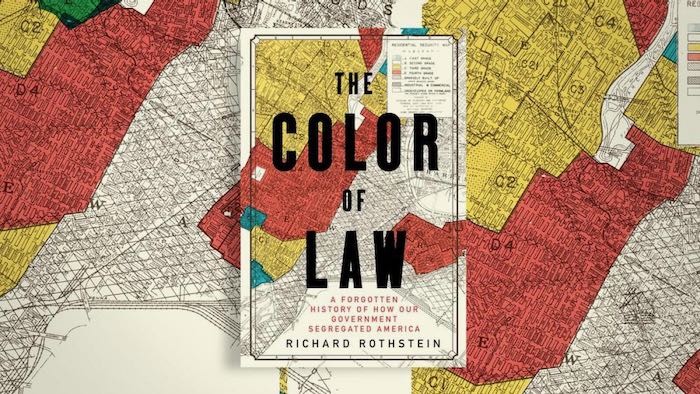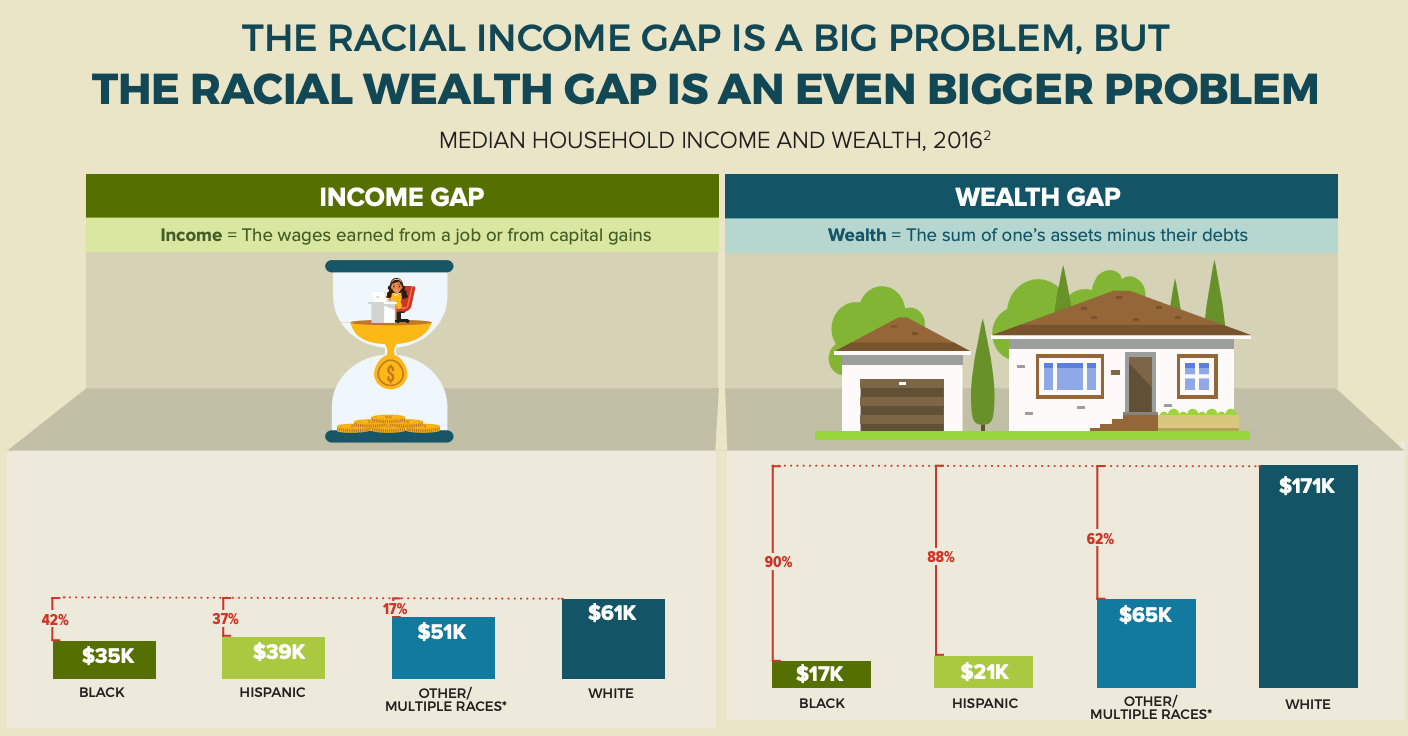Sobre la historia legal del racismo en América

Don’t Know Much About History?
Throughout the country, some states are racing to make sure lots of students really “Don’t Know Much About History” by passing laws to ban the study of critical race theory.
Simply put, critical race theory examines the connection between laws, institutions and racism. According to the American Bar Association, it calls for fresh thought about issues such as these:
- How has the law protected racism and upheld racial hierarchies?
- How does the law reproduce racial inequality?
- How can the law be used to dismantle race, racism, and racial inequality?
Rather than pass laws that limit what students learn, we should make sure students get a full picture of US history, warts and all. That’s why The Color of Law: A Forgotten History of How Our Government Segregated America is once again at the top of our summer reading list. What better way to celebrate Juneteenth, America's new national holiday?
Why this book? It can help students understand one cause of racial injustice and how it affects their lives.
Too many students — and adults — don’t know much about this history. By understanding the history of racial segregation and its impact on millions of Americans, our schools and communities can start to remedy this wrong.
How much do your children know about racial segregation?
- Do they know, for example, if they are white, that their middle class status may in large part be the result of affirmative action for whites — not simply hard work?
- Can they relate the impact of segregation to the unequal impact of COVID-19 on people of color?
- Can they trace housing segregation policies to the neighborhood they live in and the schools they are allowed to attend?
- Do they know that our government created many of these inequities? Can they use their skills in analysis and critical thinking to try to remedy them?
Public Policy and Segregation
Racial housing segregation did not happen by chance. It was not just personal prejudice or unequal wealth. It was created by government policies.
Starting with the New Deal in the 1930s, federal, state and local housing policies intentionally created “White Only” neighborhoods. Many benefits of the GI Bill, which helped millions of white veterans attend college, buy houses, and move into the middle class, were not available to African Americans. The inability to get a mortgage to buy a house and to attend college is a big cause of the wealth gap between whites and African Americans.

The history is not pretty. In the New Deal, neighborhoods explicitly prohibited African Americans, Jews, Asians and others from buying houses. Redlining — promoted by the federal government — denied housing loans to African Americans who wanted to live in or near white neighborhoods. The interactive tool Mapping Inequality allows you to examine these red line policies throughout the country and view the impact on major cities. (Click the image to learn more.)

The Color of Law tells the story of blatant racial discrimination. It describes how laws and regulations pushed African Americans into overcrowded neighborhoods — frequently with limited garbage collection, water and sewer services. Real estate swindlers used blockbusting techniques (now illegal) to stoke white flight so they could buy up houses at bargain basement prices, then profit by reselling them to African Americans, for example in East Palo Alto. Laws and regulations were also central to pushing African American communities out of the center of many major US cities through urban renewal and the construction of interstate highways.
Generations of African American families never recovered financially from these discriminatory tactics. Housing is frequently the most important investment a family can make. This built equity and wealth for generations of white Americans. African Americans were deprived of this opportunity.
The animated documentary Segregated by Design, based on The Color of Law, is a very effective 17-minute summary of how federal, state, and local governments unconstitutionally segregated cities in the United States through law and policy.

|
Resources to learn more and support conversations |
|
|---|---|
|
This toolkit suggests ways to use primary sources to help students uncover the realities of segregation and how it was deliberately perpetrated in the United States. |
|
|
“Why Is This the Only Place in Portland I See Black People?” |
|
|
Stealing Home: Eminent Domain, Urban Renewal, and the Loss of Community |
Teaching about patterns of displacement and wealth inequality through the history of Chávez Ravine and the building of Dodger Stadium. |
|
How Red Lines Built White Wealth: A Lesson on Housing Segregation in the 20th Century |
Introduces students to the 20th-century housing policies that bankrolled white capital accumulation while halting Black social mobility — and contributed to the injustice of the modern wealth gap. |
|
Students learn about more than a dozen different examples of reparations — ranging from cash payments to land settlements to state apologies — from a variety of historical moments and places. |
|
|
Students examine policies that supported and cultivated the creation of the white middle class and the practices that excluded black and nonwhite people from economic development. |
|
|
Students examine the local, state and federal policies that supported racially discriminatory practices and cultivated racially segregated housing. |
|
|
Students examine how government policies helped white people access economic benefits while preventing African Americans from accessing these same benefits. |
|
|
Study guide for the book. |
|
Reading list
The California State PTA has developed a reading list for parents to help them understand the history of racism, which may not have been taught in their history classes.
Etiquetas de esta publicación
EquidadTodas las etiquetas
Academia Khan Acoso acreditación Actitud Administradores Agallas Álgebra Ambiente escolar Aprendizaje Aprendizaje Ampliado Aprendizaje basado en proyectos Aprendizaje socioemocional Artes Asistencia Asociación de Maestros de California Asociación de Padres y Maestros Atención plena Ausencias Bonos de obligación Brecha de desempeño Burbank Calidad Calificación de escuelas Calificaciones en pruebas Cambio Canción Carol Dweck Carrera Cerebro Certificación CHAMP Ciencia Cierre de escuelas Civismo Comparaciones nacionales Concurso Consejeros Consejo escolar Control local Costo de educación Creatividad Crecimiento económico Crucigrama CSBA Currículo común cursos de estudios étnicos Datos Después de clases Día de la Independencia Diálogo dislexia Distritos Diversidad Dotado DREAM Act EACH EdPrezi EdSource EdTech Educación bilingue Educación del carácter Educación especial Educación religiosa Educación sexual Educación universal Elección Elección de escuela Enlaces guía Equidad Escasez de maestros Escuelas católicas Escuelas chárter Escuelas comunitarias Escuelas en casa Escuelas Magnet Escuelas privadas Escuelas religiosas Esfuerzo Estándares Estudiantes en riesgo Estudiantes que están aprendiendo inglés estudiantes sin hogar Estudios étnicos Evaluación Evaluación nacional de progreso educativo Éxito Federal Filantropía Financiamiento Financiamiento local Fondos por categorías Fundaciones educativas Ganadores Gastos Gobierno local Gráfica Grupos de presión Guía para padres líderes Historia Horas de oportunidad Huelga Humanidades Impuestos a la propiedad Impuestos prediales Índice de desempeño académico Indignación Indocumentado Infraestructura Iniciativas Instalaciones Internacional Investigación Jerga Kindergarten La Ley Brown LCFF Lectura Ley Cada Estudiante Triunfa Ley Que Ningún Niño Se Quede Atrás Liderazgo Límites de distritos Litigación Lotería Maestros mantequilla de cacahuate Mapa Mapa del sitio Marcador Matemáticas Medios de comunicación Mejoramiento Continua Mito Mitos Motivación estudiantil Negociación colectiva Negocio Niñez temprana Noticias falsas Nutrición Organizaciones de gestión para escuelas chárter Padres Pandemia Participación de los padres Pedagogía Pensiones personalizado PISA Plan de responsabilidad de control local Planificación Plantilla Población Pobreza Política Política federal Políticas Premio Prescolar Presupuestos Prezi Proposición 13 Proposición 98 Propósito de la educación Pruebas Reclutamiento de maestros Reforma Requisitos ag Responsabilidad Resumen del año Retención de maestros Rigor rompecabezas Rúbrica de evaluación Salario de maestros Salud Salud mental Se necesita ayuda Serrano vs Priest Sindicatos Sorteo SPSA STRS Sueño Suicidio Superintendente Suspensiones Tablero Talento Tamaño de clases Tareas escolares Tasas de graduación Tecnología Tecnología en la educación Tiempo dedicado a la tarea Tiempo en la escuela Trump Universidad Vacunación Vales Valores Vapeando Verano Vídeo Voluntariado Voluntarios Voto Voz del estudiante¡Compartir es vivir!
Restablecer contraseña
Buscar aquí en el contenido del blog y todas las lecciones.
Iniciar sesión con correo electrónico
We will send your Login Link to your email
address. Click on the link and you will be
logged into Ed100. No more passwords to
remember!














Preguntas y comentarios
Para comentar o responder, por favor inicie sesión .